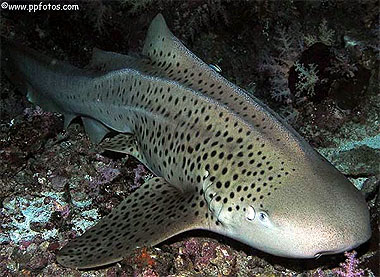“It’s all psychological. You yell barracuda, everybody says, “Huh? What?” You yell shark, we’ve got a panic on our hands on the Fourth of July.” – Mayor Vaughn, JAWS 1975
Have you ever walked in the woods at night? The darkness closes in on you; even familiar walking paths take on an eerie ambiance. The call or footsteps of an animal conjures up images of monsters in your mind. Never mind the fact that the animals are warning others and running away from you 🙂 The unknown in the darkness can be frightening. Our minds catastrophize the worst and create unnecessary fear. The ocean is kind of like the woods at night. We have to have special equipment to dive in the deeps because we didn’t evolve to live there. So, the marine world can be strange and overwhelming at times. Our mind creates monsters where there are none. Galeophobia, or the fear of sharks, comes from the Greek words “Galeos” sharks and “Phobos” fear. Symptoms may include anxiety with elevated heart rate, shortness of breath, shaking, sweating, nausea, or dizziness. Hollywood movies and the media reinforce the fear of sharks. No matter the level of injury, many news agencies post a picture of a huge white shark with a gruesome headline. Many of the bites we see here in Florida are from sharks that were smaller than the person they bit.
Coastal sharks, like blacktips (C. limbatus), hunt in the surf close to shore. They can use the murky water to hide from their baitfish prey and their predators, larger sharks. Unfortunately, this is where people recreate. The water is so murky that the sharks are likely reacting to flashes of movement. The shark may bite down on a surfer’s foot that is connected to a very bony human that’s larger than they are, instead of a nice juicy fish. The freaked-out shark immediately let’s go and swims away. The vast majority of bites we document are minor cuts, which may need a stitch or two. That being said, the odds of the average person being bitten by a shark are 1 in ~ 11.5 million. There are certainly people who have more exposure to the ocean than others, but the odds remain exceedingly low. ISAF only documents on average 70 unprovoked bites per year globally. While fatalities occur, they are rare, with only 4-5 occurring globally each year. Because some shark species can seriously injure people, apprehension is not entirely unwarranted. However, that does not mean that someone should live their life in crippling fear of sharks or the ocean, but rather adopt healthy respect for these wild animals. It is also worth noting that out of the more than 500 sharks, only 17 species are known to bite people regularly.
While this knowledge is a great place to start, further steps are likely needed for those suffering from severe galeophobia. Speaking with a therapist is always a good start, especially if someone has had a negative encounter with a live shark. Additionally, exposure therapy may likely help alleviate these fears. This is, in fact, the advice we give to bite victims. Start small, read books about sharks, watch documentaries, but be careful to avoid media that plays on the fear with intense music and themes. Remember, it is ok to take breaks to regroup and breathe. Share what you learned with a trusted friend or therapist. Next, try to go to your local aquarium. Talk to docents about sharks if you aren’t ready to see one. See if they have touch tanks, as some aquariums have small sharks or rays in these (skates and rays are just flat sharks). Then work your way up to bigger shark exhibits. Many aquariums offer snorkeling or diving experiences with sharks. The sharks in these tanks are generally docile, and safety personnel are there to make sure you and the sharks stay safe. Remember, you can be scary to a shark too. Finally, go to the beach and swim in the ocean when you’re ready. Now that you’re comfortable around these marine predators, it’s important to remember that they are still wild animals. Being cautious and respectful is not the same as fear.
Some quick tips to reduce your odds of encountering a shark include swimming with a buddy; staying close to shore; don’t swim at dawn or dusk; don’t swim around schools of fish or where people are fishing; avoid wearing jewelry; avoid excess splashing at a single spot; and more HERE. Don’t let fear control your life. Get out of doors and learn about these and more amazing creatures.
